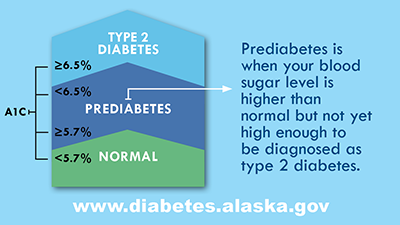DECEMBER 2019
Having trouble viewing this email? View it as a Web page.
Anchorage Neighborhood Health Center partnership provides a new diabetes prevention program in Anchorage
The Alaska Diabetes Prevention and Control Program supports National Diabetes Prevention Programs (National DPPs) to help people facing higher chances of developing the disease from actually getting it. Diabetes is a leading cause of death in Alaska and increases people’s chances of heart disease, stroke and serious disabilities like blindness, amputation and kidney disease.
In 2018, Alaska had only six National DPPs, and only one in Anchorage through the YMCA. That Anchorage program could only enroll 30 participants a year, but the need was greater. The number of Alaskans with diabetes is increasing, and about one out of three people faces higher chances for developing diabetes. Given that, many more people in Anchorage and across the state could benefit from prevention programs. To better meet that need, the Alaska Diabetes Prevention and Control Program set a goal to increase the availability of National DPPs, a program developed by the Centers for Disease Control and Prevention (CDC) as an evidence-based lifestyle change program to reduce the number of new cases of diabetes.
This fall, Alaska’s diabetes program achieved that goal by creating a new National DPP with the Anchorage Neighborhood Health Center (ANHC), the largest Federally Qualified Health Center in Alaska. ANHC staff recently identified diabetes prevention as one of their priorities and expressed a commitment to starting a National DPP by sending four staff members to a lifestyle coach training. In September 2019, ANHC began offering the first class managed by Tamara Deschaine, a registered dietitian and certified diabetes educator.
“We knew the National DPP program was effective. We were referring patients to the YMCA program,” Deschaine said. “I saw the importance and was willing to do it. After all, we have the means, we have the space, we have the staff, and we knew the program needed to be more widely available, especially to our patients.”
To recruit participants, ANHC posted flyers around their health center. Staff also encouraged patients to take the quick and easy prediabetes risk quiz developed by CDC to determine increased chances of developing diabetes. They successfully recruited 10 participants into the new program.
Prediabetes and diabetes impact thousands of Alaskans
Diabetes is a disease that happens when someone’s blood sugar is too high. Most people develop diabetes over several years, often starting with a condition called prediabetes — when blood sugar levels are higher than normal, but not high enough to be diagnosed as diabetes. That’s a concern, because the CDC estimates one of three adults has prediabetes, and most of them don’t know it.
Developing diabetes is costly and harmful to long-term health. On average, people with diabetes have health care costs that are more than two times higher than those without diabetes, stated a CDC report. The most recent diabetes prevention report for Alaska showed that diabetes contributed to the need for services in 70,487 hospital visits in 2016, with more than 9,000 visits requiring hospital admission.

Empowering Alaskans through National Diabetes Prevention Programs
The National DPP, a year-long structured program that uses a CDC-approved curriculum, can help Alaskans with prediabetes reduce their chances of developing diabetes. In a group setting led by trained lifestyle coaches, participants learn ways to eat healthier and be physically active, as well as develop problem-solving, stress-reduction and coping skills. This program is based on research that demonstrated a 58% reduction in the number of new cases of diabetes overall among people with prediabetes, and a 71% reduction in new cases for those over age 60.
The goal for each participant is to lose at least 5% of body weight by:
- Progressively reducing daily calories through improved food choices
- Gradually increasing moderate physical activity (for example, brisk walking) to at least 150 minutes per week
- Developing problem-solving and coping skills
Visit the Alaska Diabetes Prevention and Control Program website to find a National DPP in Alaska.
The state diabetes program staff can provide assistance and support to health care and community-based organizations interested in starting their own National DPPs. For more information, contact Mary Schneider, the Diabetes Prevention and Control Program Manager, at mary.schneider@alaska.gov or (907) 269-3454. |